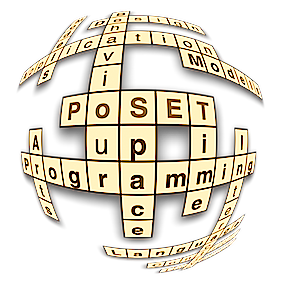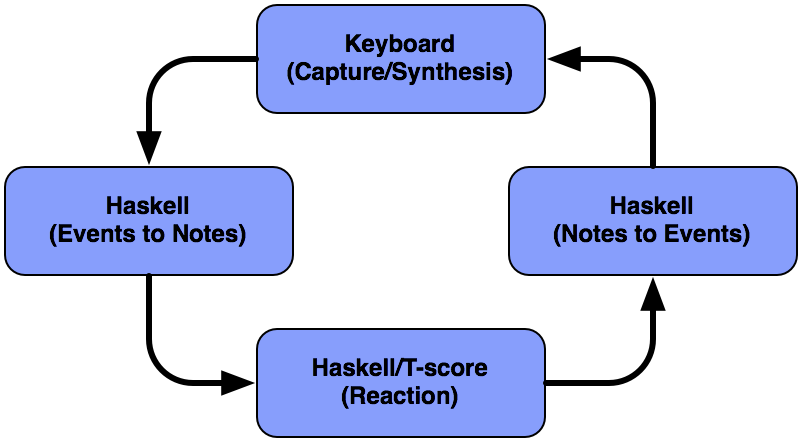
Interpolations
An "Art & Science" ongoing series of experiments !(with the support of Idex Bordeaux)


|
InterpolationsAn "Art & Science" ongoing series of experiments !(with the support of Idex Bordeaux) |

|
|
Abstract of the project (french version here) : Half-way between algebraic modeling and improvised music, the Interpolation project aims at experimenting the T-score reactive music programing language as well as observing the musician's adaptation capacities in front of algorithm based feedbacks. A series of musical miniatures, the « interpolations », are realized for such a purpose. In each piece, the piano is reactive. In real time, the musician is facing some reaction figures coming from another world, the scientific world of algebra and programming. He must improvise with notes, rhythms and harmony that are going slightly out of control. Yet, after few seconds, he manages to adapt himself, recreating an aesthetic universe that may be unexpected but still belongs to him and remains deeply human. Pushing further the interpolation project (see below), some "videos" made from recordings of a performance rehearsal in february 2017. Trio for piano (D.J.), keyboards (Edwin Buger) and computer (itself). Two series series of interpolations recorded at LaBRI/SCRIME in décember 2015 and march 2016. While interpolations of the first series act on every note individually, interpolations of the second series integrate more complex features such as conditionals and record/replay capacities. Interpolations Series II
Interpolation #6D : another record and replay, but now one fourth higher... Interpolation #7D : pressing a key makes a repeat, which frequence depends on the delay with the last note.... Interpolation #8D : one note over two is kept to be played later in chords... This will end is sort of a shuffle... Interpolation #9C : notes are regularly recorded and played back twice faster, forward and backward, one octave lower. Interpolation #11C : one note over two is recorded to be played in chords afterward. Interpolation #1C : sort of a dodecaphonic mode, based on a the 12 pitch classes in a given random cyclic order. Then any pressed key catches such a picth, only providing octave position and velocity. Interpolation #5C : pressing a key makes it repeated at a fixed tempo. Releasing the key stops the repeat. Recorded March 2016 @ hémicyclia, LaBRI/SCRIME. Interpolations Series I
Interpolation #6B : a repeat is not an echoe (and emotion lays in the apparent clumsiness) Interpolation #8A : changing harmononizer (another weird interpolation idea, by J. Arias for a change) Interpolation #1B : harmonized with a fourth below (a classic) Interpolation #1A : followed by downward fifths at fixed rate (forced enrichment) Interpolation #4B : followed by downward fiths at variable rate (more control on the rythm) Interpolation #9B : the keyboard is a mirror to itself (upside down and vice versa) Interpolation #2A: each note launch a transposable fixed length cycles (cold mathematical wilderness) Recorded december 2015 @ hémicyclia, LaBRI/SCRIME. Résumé du projet: A mi-chemin entre modélisation algébrique et musique improvisée, le projet Interpolations vise a expérimenter le langage de programmation réactive T-score, un langage de captation, de combinaisons et de transformations temps-réels d’objets musicaux réactifs. Il vise aussi à explorer la capacité d’un musicien à improviser dans un environnement musical augmenté de façon arbitraire. Ces deux aspects sont explorés à travers l’écriture et la réalisation d’une série de miniatures, les «interpolations». Dans chaque pièce, le piano devient réactif. En temps réel, le musicien fait face à des figures venues d’un autre monde, celui du scientifique, de l’algèbre à la programmation. Il doit improviser avec des notes, du rythme ou de l’harmonie, mécaniques et arbitraires, qui pourraient lui échapper. Mais le musicien s’adapte en quelques secondes, re-créant un univers esthétique parfois inattendu mais qui lui appartient toujours et qui reste profondément humain. |